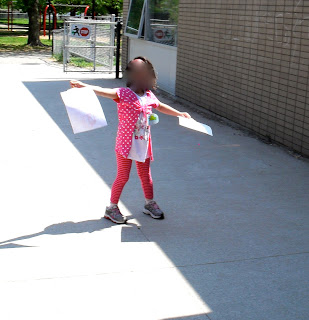The children worked as a class to compare the area of our classroom carpets. They covered each carpet with sheets of 81/2 x 11 paper and created strategies for counting the number of sheets used (one student stepped on each sheet while we counted aloud, each child counted a small section of the carpet, counting the paper as they were picked up, etc.)
Some children wanted to extend this idea to comparing papers of different sizes by covering them with objects, such as unifix cubes.
Working in small groups, the children measured the lengths of our classroom carpets by lining up objects, like cubes, chain links and straws end to end and counting the number of materials used.
At Home: Help your child measure common household items (e.g. furniture, books, pillows) using their hands, blocks, straws, etc. This is also a great way to measure distance. How may steps does it take to get from the elevator to your apartment door?

















































